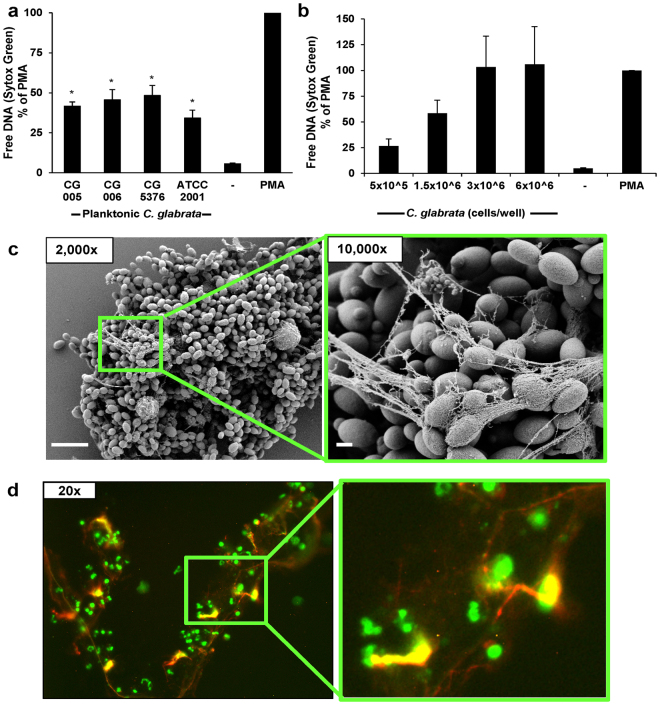Figure 1.
Planktonic C. glabrata induce release of NETs. (a) Human neutrophils were exposed to four strains of planktonic C. glabrata (1.5 × 106 cells/well) for 4 h. NET release was estimated by Sytox Green detection of free DNA. Results were normalized for the positive control, PMA, and data from 5 experiments performed in triplicate were combined. Neutrophil responses to Candida were analyzed by ANOVA with pairwise comparison to the untreated neutrophil control, *P < 0.05, SEM shown. (b) Various concentrations of planktonic C. glabrata (CG 006) were co-cultured with human neutrophils for 4 h and NET release was estimated using Sytox Green. Results were normalized for the positive control, PMA, and data from 5 experiments performed in triplicate were combined, SEM shown. (c) Neutrophil interactions with planktonic C. glabrata at 4 h were imaged with scanning electron microscopy. Measurement bars represent 10 µm and 1 µm for 2,000x and 10,000x images, respectively. (d) Following co-culture with C. glabrata for 4 h, the neutrophil response was visualized by immunofluorescence using an anti-citrullinated H4 antibody (red) and Sytox Green staining of DNA (green).

